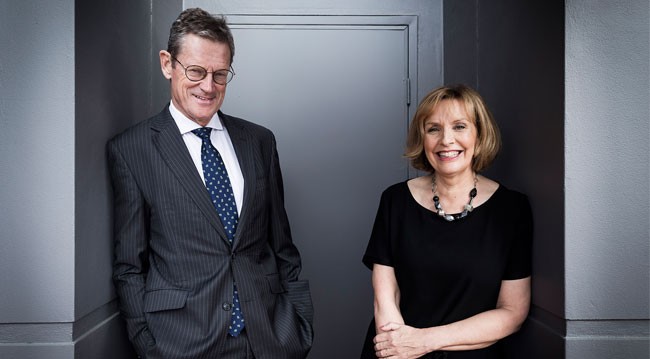Goodstart Early Learning installed a unique board structure in 2010 that has kept their business, and their directors, thriving.
The board of Australia’s largest childcare group, Goodstart Early Learning, operates differently from most corporate boards. It’s been described as a “noses in, fingers out” approach, meaning directors’ skills and experience from their previous careers are frequently called upon by management — without wading too deeply into operational issues.
Chair Michael Traill AM agrees the Goodstart board operates differently to most corporate boards. A key reason is its structure as a not-for-profit social impact organisation. Goodstart, which bought 678 childcare centres from the failed ABC Learning in 2010, is run as a serious commercial enterprise. However, profits are reinvested to improve care and education — especially for excluded and disadvantaged children — as well as professional development and research.
As Traill describes it, “We’re a different beast; we’re a $1b in revenue social enterprise.”
Of course, this deep sense of social purpose means Goodstart’s board and workforce culture is perhaps more cohesive than a business aligned purely around a profit motive. But the Goodstart model has plenty of insights and lessons for directors of all sorts of enterprises.
Goodstart Early Learning
Established 2010 after Social Ventures Australia, Mission Australia, the Brotherhood of St Laurence and the Benevolent Society join forces to buy the bankrupt ABC Learning chain of childcare centres.
644 centres care for 71,000 children. More than 500 centres have been upgraded during the past three years and occupancy rates have lifted to about 80 per cent, against the oversupplied industry trend. More than 90 per cent of centres meet the National Quality Standard — compared with 45 per cent of those assessed when the standard was introduced in 2012.
15,000 on average, Goodstart’s staff members are paid five per cent above the award and employee turnover has almost halved from 24 per cent at ABC Learning. It has invested more than $100m in professional development and research since 2014 and 570 staff members are enrolled in Goodstart’s own Institute of Early Learning.
500+ vulnerable children have received two days a week of fee-relief care via a scholarship program. Almost 25 per cent of the centres are in some of Australia’s lowest socioeconomic areas.
One team
Julia Davison MAICD, Goodstart CEO since 2011, sees similarities between how the board and management work together and her early career in the British hospital sector, where boards commonly consisted of four executive directors and four non-executive directors, plus a non-executive chair.
“Goodstart is not a hierarchical set-up, with the board sitting above the management team,” she explains. “We work as one team with a common goal. Board members don’t micromanage, but we make sure we tap into their expertise.”
What this means in practice is that directors with particular skills are used as if they were external consultants or coaches. “We make sure we access in sensible ways the skills of the board members in working pretty closely with senior management,” says Traill.
“Wendy McCarthy AO FAICDLife [former deputy chair], who had vast experience in change, chaired an early learning reference committee on how the board can support management. That’s not a committee you see in a commercial context.”
Committed to commitment
Davison says another difference is the amount of time Goodstart directors are prepared to put in. Quarterly board meetings at Goodstart’s Brisbane head office are spread over two days, starting with a half-day informal session with senior management on topics such as advocacy or talent, followed by dinner, then a formal board meeting the next morning. Directors also attend many functions, including state conferences and leadership development programs, and visit childcare centres regularly to gauge quality and even fine details, such as whether wall decorations are child height.
Traill says the board is proactive in ensuring it has a line of sight into the business, in contrast to some of the evidence at the banking Royal Commission, which indicated directors and senior management had little idea what was going on.
“I’d be asking the bank CEOs what’s their equivalent of our [childcare] centre visits, to have some transparency with day-to-day operations,” says Traill. “You have to get close enough to the business, on a limited basis, to give comfort — or not — that things are happening as they should.”
While the centre visits show what’s happening at the coalface, Traill says the quarterly topic sessions and dinners support a culture of open and informal engagement between the board and senior management, and illuminate team dynamics. “You can learn a lot from watching how people interact with each other,” he says.

Informality and collegiality
“Goodstart is more informal than any board I’ve worked with and the level of collegiality is much stronger,” says Davison. For example, there’s rarely a vote taken on motions. “We have formal papers for discussion or decision and free-flowing conversation around those.”
An important aspect for her is that board members appreciate they have limited sight of operational issues and leave their egos at the door. “I remember [former director] Greg Hutchinson AM saying to me early on, ‘I’ve only got 10 per cent line of sight, you’ve got more, so forgive me if my perspective is limited,’” she says. “He then made the very insightful comment that they don’t try and catch the management team out. They challenge us, but in a very respectful way. This leads to a high degree of openness and trust.”
Former director McCarthy uses the adjective “respectful” to describe board discussions. “I never felt upset or personally attacked,” she says, contrasting that with other boards she has been on where vitriolic disagreements made it hard to continue working with some directors.
Board structure
Goodstart had the advantage of creating a completely new board when it took over ABC Learning’s business, as if it was a startup. Except that instead of representing founders’ interests, directors all had a burning commitment to make Goodstart work and not leave tens of thousands of children around Australia stranded without care.
“Right from the start, we wanted a high-quality independent board with a broad diversity of backgrounds and views — government, not-for-profit, commercial,” says Traill, who was an executive director of Macquarie Bank before co-founding NFP Social Ventures Australia in 2002. “The common denominator was that we were all conscious we had a lot to learn from each other.”
It wasn’t all smooth sailing. “In the early days, there was that classic group dynamic where you go through the process of understanding different views,” he says. “That can result in tension and conflict, which is not something to be afraid of, but it must be brought into the open.”
Now, the focus is on board renewal, helped by boardroom consultant Terry Atkinson, who conducts biannual reviews of how the Goodstart board is functioning, interviewing all directors and members of the senior management team. Goodstart welcomed Natalie Walker as deputy chair and non-executive director in December 2018, bringing depth of experience as the founder and managing director of Inside Policy, and former CEO of Supply Nation.
“I’m staying on, but the process of renewal includes me over the medium term,” says Traill. “Fifteen or 20 years on the same board is not healthy.”
Expressions of appreciation
Davison recalls a phone call from founding chair, the late Robin Crawford AM, near the end of his first year as CEO, to thank her for her work. “I’d never really had that before, except at performance reviews or when I left jobs,” she says. “Our board says thankyou to me and my team and the staff in the centres on a regular basis — not just once a year at the Christmas function. People feel respected and valued irrespective of who they are; the way the board interacts with them is the same. That ongoing appreciation of the work people do every day is really important.”
Capitalism 2.0
The need for social impact investing has never been more prevalent, says Michael Traill AM.
Michael Traill is convinced that Goodstart Early Learning is not a one-off. Its track record for almost a decade, the revelations from the banking Royal Commission into how profit-driven cultures can override ethical considerations, and growing interest from superannuation funds means social impact investing is back on the radar.
The challenge, he says, is to create more large-scale opportunities where meaningful social impact is matched with financial returns that satisfy investment expectations.
“I still feel like we’re at the early stage of the cycle, but it’s rapidly maturing,” he says. “The momentum and energy is there.”
He says sectors of the economy significantly funded by government, such as aged care, the National Disability Insurance Scheme, TAFE and early learning, are obvious targets. For example, Sunsuper, where Traill is on the board, earlier this year committed $200m to a social impact investment into aged care.
“Super funds are looking to invest north of $50m to $100m,” he says. “What’s stopping them is the need to be creative and proactive in originating deals.”
Traill says one of the motivations of his book, Jumping Ship: From the World of Corporate Australia to the Heart of Social Investment, was to show that Goodstart was not a serendipitous one-off. “It’s entirely repeatable across multiple sectors. I think of it as Capitalism 2.0.”
He adds that the Royal Commission into Aged Care Quality and Safety and continuing fallout from the banking Royal Commission will reinforce the need for social impact investing. “The banking Royal Commission highlights the tension between a “for-profit” and a “for-purpose” motive, and shows the balance can be relatively easily skewed. Unless you are very explicit about the importance of social purpose, those goals tend to get lost.”
Latest news
Already a member?
Login to view this content


